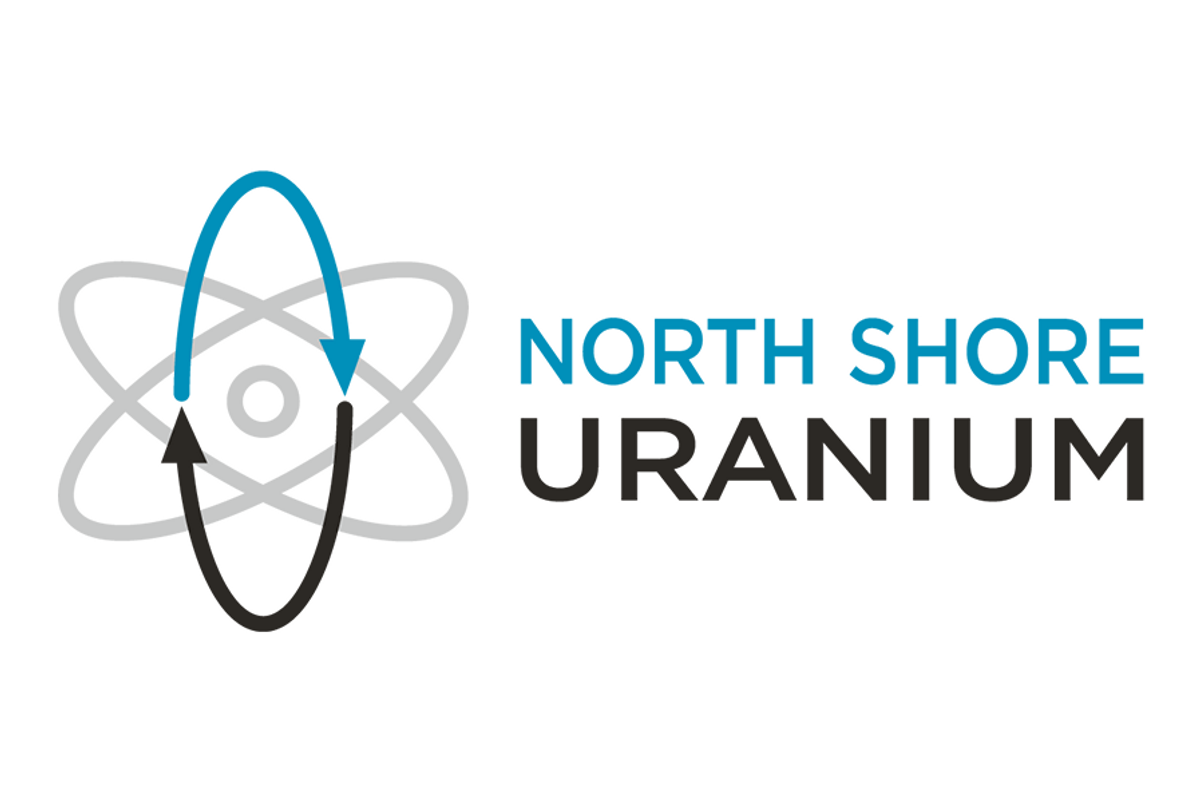Alliance has the potential to develop commercial technologies and sources of isotopes needed for a new domestic medical supply chain
Energy Fuels Inc. (NYSE American: UUUU) (TSX: EFR) ( "Energy Fuels" or the "Company" ) is pleased to announce the execution of a Strategic Alliance Agreement ( "Alliance" ) with RadTran, LLC ( "RadTran" ) to evaluate the recovery of thorium, and potentially radium, from the Company's existing rare earth carbonate (" RE Carbonate ") and uranium process streams for use in the production of medical isotopes for emerging targeted alpha therapy (" TAT ") cancer therapeutics. This initiative will complement the Company's existing uranium and RE Carbonate businesses, as it will investigate the recovery of isotopes in existing process streams at Energy Fuels' White Mesa Mill in Utah (the "Mill" ) for medical purposes. RadTran is a Denver, Colorado -based technology development company focused on closing critical gaps in the procurement of medical isotopes for these applications.
Uranium and thorium are long-lived (long "half life"), naturally occurring radioactive elements that decay into a series of different elements through the successive loss of alpha or beta particles. Certain elements in or derived from the uranium and thorium decay chains have short half-lives and emit alpha particles. These alpha emitting isotopes are currently being studied by major pharmaceutical companies developing therapies to treat cancer on a cellular level, while minimizing damage to surrounding healthy tissue. However, existing domestic and global supplies of these isotopes are in short supply, and existing methods of production are costly and currently unable to scale-up to meet widespread demand as new drugs are developed and approved in the U.S., Europe and around the World. These are major roadblocks in the research and development of new TAT drugs, as pharmaceutical companies wait for scalable and affordable production technologies to become available.
The Mill can represent a possible solution to this medical supply chain issue. The Mill is the only licensed and operating conventional uranium mill in the U.S., and it recently began production of RE Carbonate from natural monazite sands. Monazite sands, natural uranium ores, and certain other feed sources for the Mill contain thorium-232 ( "Th-232" ) and radium-226 ( "Ra-226" ), which would normally be disposed of permanently in the Mill's tailings impoundments following processing for uranium and RE Carbonate recovery. As an initial step in this medical isotope initiative, Energy Fuels and RadTran will evaluate the technical and economic feasibility of recovering Th-232, and potentially Ra-226, from the Mill's natural monazite and other existing feeds, subject to receipt of any required licenses, permits and regulatory approvals. These isotopes are a necessary precursor to the specific medical isotopes needed by pharmaceutical companies for their emerging TAT cancer therapeutics, making this initiative the potential beginning of an important new domestic medical supply chain.
If this initial step is feasible, and subject to receipt of any required licenses, permits and regulatory approvals, Energy Fuels and RadTran will then evaluate the feasibility of recovering radium-228 ( "Ra-228" ) from the Th-232 and thorium-228 ( "Th-228" ) from the Ra-228 at the Mill using RadTran technologies, with the backing of the Pacific Northwest National Laboratory ( "PNNL" ) in Richland, Washington . The recovered Ra-228, Th-228, and potentially Ra-226, would then be sold to pharmaceutical companies and others to produce the short-lived isotopes which are the leading medically attractive TAT isotopes for the treatment of cancer, including lead-212 ( "Pb-212" ), actinium-225 ( "Ac-225" ), bismuth-213 ( "Bi-213" ), radium-224 ( "Ra-224" ), and radium-223 ( "Ra-223" ).
"The Alliance between Energy Fuels and RadTran is remarkable as it aims to alleviate the major bottleneck in the targeted alpha therapy market. Upon the successful production of these isotopes at the Mill, this Alliance will allow pharmaceutical companies who are devoping targeted alpha therapies to progress through clinical trials and deploy therapeutics commercially without the hinderance of isotope supply," stated Dr. Saleem Drera , Founder and CEO of RadTran.
If successful, this Alliance has the potential to generate significant future cashflow for Energy Fuels in the medical isotope industry. In addition, Energy Fuels can support cancer research and the creation of a new, U.S.-based medical supply chain that adheres to the highest global standards for human rights, sustainability, safety and environmental protection. This initiative is also highly complementary to the Company's existing businesses, as the uranium and rare earth feeds Energy Fuels currently processes contain the required thorium and radium. Energy Fuels is seeking to put these isotopes to beneficial human use, rather than losing them to permanent disposal.
"At its heart, the Energy Fuels' Alliance with RadTran is about maximizing the value and human benefit of our existing uranium and rare earth feeds at the White Mesa Mill," stated Mark S. Chalmers , President and CEO of Energy Fuels. "Energy Fuels has a long track record of ethically and responsibly processing a wide variety of naturally occurring radioactive materials at the White Mesa Mill for the recovery of uranium, and more recently, rare earths. In our view, recovering medical isotopes from these same streams, that would otherwise be lost to direct disposal, is a great way to maximally use all of our feeds. Indeed, we are essentially replicating China's 'monazite plan.' China purchases monazite from around the globe, recovers the uranium for use in their nuclear industry, recovers the thorium presumably for use in their nuclear and pharmaceutical industries, and recovers the rare earths for processing into advanced materials needed for various clean energy and advanced technologies. Our White Mesa Mill is a facility unique to the United States that has the potential to do the same thing at world standards.
"We believe Energy Fuels has the potential to create a domestic supply of thorium and possibly radium that can be harvested using RadTran's technologies for use in the production of the next generation of cancer therapies, a potentially multi-billion dollar industry. And we would be accomplishing this in a way that is environmentally beneficial and highly congruent with Energy Fuels' recycling and sustainability goals. We look forward to working with RadTran on this important initiative."
ABOUT Energy Fuels
Energy Fuels is a leading U.S.-based uranium mining company, supplying U 3 O 8 to major nuclear utilities. Energy Fuels also produces vanadium from certain of its projects, as market conditions warrant, and is ramping up to commercial-scale production of REE carbonate in 2021. Its corporate offices are in Lakewood, Colorado , near Denver, and all of its assets and employees are in the United States . Energy Fuels holds three of America's key uranium production centers: the White Mesa Mill in Utah, the Nichols Ranch in-situ recovery ("ISR") Project in Wyoming, and the Alta Mesa ISR Project in Texas. The White Mesa Mill is the only conventional uranium mill operating in the U.S. today, has a licensed capacity of over 8 million pounds of U 3 O 8 per year, has the ability to produce vanadium when market conditions warrant, as well as REE carbonate from various uranium-bearing ores. The Nichols Ranch ISR Project is on standby and has a licensed capacity of 2 million pounds of U 3 O 8 per year. The Alta Mesa ISR Project is also on standby and has a licensed capacity of 1.5 million pounds of U 3 O 8 per year. In addition to the above production facilities, Energy Fuels also has one of the largest NI 43-101 compliant uranium resource portfolios in the U.S. and several uranium and uranium/vanadium mining projects on standby and in various stages of permitting and development. The primary trading market for Energy Fuels' common shares is the NYSE American under the trading symbol "UUUU," and the Company's common shares are also listed on the Toronto Stock Exchange under the trading symbol "EFR." Energy Fuels' website is www.energyfuels.com .
CAUTIONARY STATEMENTS REGARDING FORWARD LOOKING STATEMENTS
This news release contains "forward-looking information" within the meaning of applicable securities laws in Canada and the United States . Forward-looking information may relate to future events or future performance of Energy Fuels. All statements in this release, other than statements of historical facts, with respect to Energy Fuels' objectives and goals, as well as statements with respect to its beliefs, plans, objectives, expectations, anticipations, estimates, and intentions, are forward-looking information. Specific forward-looking statements in this discussion include, but are not limited to, the following: any expectation that the Company's evaluation of thorium and potentially radium recovery at the Mill will be successful; any expectation that the potential recovery of any other isotopes from any thorium and radium recovered at the Mill will be feasible; any expectation that any thorium, radium and other isotopes can be recovered at the Mill and sold on a commercial basis; any expectation that this initiative will alleviate the major bottleneck in the targeted alpha therapy market; any expectation that, upon the successful production of these isotopes at the Mill, this initiative will allow pharmaceutical companies who are devoping targeted alpha therapies to progress through clinical trials and deploy therapeutics commercially without the hinderance of isotope supply; any expectation that this initiative has the potential to generate significant future cashflow for Energy Fuels in the medical isotope industry, or that this next generation of cancer therapies could be a potentially multi-billion dollar industry; any expectation that all required licenses, permits and regulatory approvals will be obtained on a timely basis or at all; and any expectation that this initiative may result in the creation of a new, U.S.-based medical supply chain that adheres to the highest global standards for human rights, sustainability, safety and environmental protection. Often, but not always, forward-looking information can be identified by the use of words such as "plans", "expects", "is expected", "budget", "scheduled", "estimates", "continues", "forecasts", "projects", "predicts", "intends", "anticipates" or "believes", or variations of, or the negatives of, such words and phrases, or state that certain actions, events or results "may", "could", "would", "should", "might" or "will" be taken, occur or be achieved. This information involves known and unknown risks, uncertainties and other factors that may cause actual results or events to differ materially from those anticipated in such forward-looking information. Factors that could cause actual results to differ materially from those anticipated in these forward-looking statements include risks associated with: processing difficulties and upsets; available supplies of monazite sands; the capital and operating costs associated with the recovery of thorium, radium and other isotopes at the Mill; licensing, permitting and regulatory delays; litigation risks; competition from others; and market factors, including future demand for and prices realized from the sale of radium, thorium or other isotopes produced at the Mill. Forward-looking statements contained herein are made as of the date of this news release, and Energy Fuels disclaims, other than as required by law, any obligation to update any forward-looking statements whether as a result of new information, results, future events, circumstances, or if management's estimates or opinions should change, or otherwise. There can be no assurance that forward-looking statements will prove to be accurate, as actual results and future events could differ materially from those anticipated in such statements. Accordingly, the reader is cautioned not to place undue reliance on forward-looking statements. Energy Fuels assume no obligation to update the information in this communication, except as otherwise required by law.
![]() View original content to download multimedia: https://www.prnewswire.com/news-releases/energy-fuels-announces-strategic-alliance-with-radtran-llc-for-the-recovery-of-isotopes-needed-for-emerging-cancer-therapeutics-301344022.html
View original content to download multimedia: https://www.prnewswire.com/news-releases/energy-fuels-announces-strategic-alliance-with-radtran-llc-for-the-recovery-of-isotopes-needed-for-emerging-cancer-therapeutics-301344022.html
SOURCE Energy Fuels Inc.

![]() View original content to download multimedia: https://www.newswire.ca/en/releases/archive/July2021/29/c9525.html
View original content to download multimedia: https://www.newswire.ca/en/releases/archive/July2021/29/c9525.html











